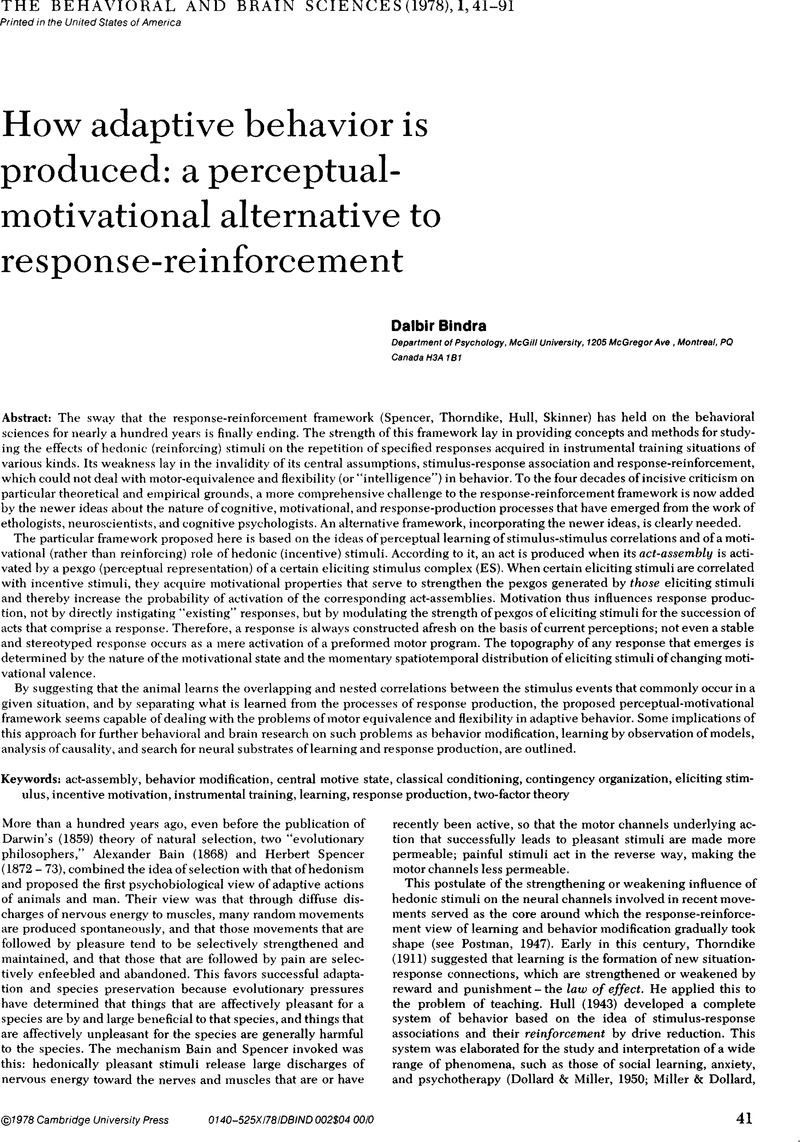No CrossRef data available.
Article contents
The problem of serial order in adaptive behavior: why not some formal cognitive structure
Published online by Cambridge University Press: 04 February 2010
Abstract
An abstract is not available for this content so a preview has been provided. Please use the Get access link above for information on how to access this content.

- Type
- Open Peer Commentary
- Information
- Copyright
- Copyright © Cambridge University Press 1978
References
REFERENCES
Dewey, J.The reflex arc concept in psychology. Psychological Review, 1898,3:357–370.CrossRefGoogle Scholar
Hulse, S H Cognitive structure and serial pattern learning by animals In Hulse, S. H, Fowler, H., and Honig, W. K. (Eds.) Cognitive processes in animal behavior. Hillsdale, N.J.: Erlbaum, 1978.Google Scholar
Hulse, S. H., & Dorsky, N. P.Structural complexity as a determinant of serial pattern learning. Learning and Motivation, 1977, 8:488–506.CrossRefGoogle Scholar
Jones, M. R.Levels of structure in the reconstruction of temporal and spatial serial patterns. Journal of Experimental Psychology: Human Learning and Memory, 1976, 2:475–488.Google Scholar
Lawrence, D. H. The nature of a stimulus: Some relationships between learning and perception. In Koch, S. (Ed.) Psychology: A study of a science Vol. 5. New York: McGraw-Hill, 1963.Google Scholar
Restle, F.Theory of serial pattern learning: Structural trees. Psychological Review, 1970,77:481–495.CrossRefGoogle Scholar
Taub, E. Motor behavior following deafferentation in the developing mature monkey. In Herman, R. M., Grillner, S., Stein, P. S. G. and Stuart, D. G. (Eds.) Neural Control of Locomotion New York: Plenum, 1976.Google Scholar




